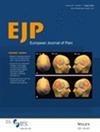Sensory profiling in neuropathic pain using quantitative sensory testing (QST) has not been extended to central neuropathic pain due to spinal cord injury (SCI). This study aims to fill this gap by evaluating sensory profiles in patients with neuropathic SCI pain.
We retrospectively analysed consecutive QST data from 62 patients with neuropathic spinal cord injury pain (SCIP), following the German Research Network on Neuropathic Pain protocol. The study included at-level and below-level SCIP due to a spinal cord lesion, and at-level SCIP following a cauda equina lesion. QST parameters were compared between diagnostic groups. QST profiles of below-level SCIP (central neuropathic pain) were manually assigned to sensory phenotypes based on literature and expert opinion.
No statistical difference in QST parameters between pain diagnoses was found. For central neuropathic pain (below-level SCIP), three phenotypes were descriptively observed: loss of function (59%), thermal and mechanical hyperalgesia combination (16%), and mechanical hyperalgesia (19%). The remaining 5% of patients did not fit a common pattern. There was no statistical difference in clinical and psychological variables between phenotypes. In a subgroup analysis, the loss of function phenotype weakly correlated with older age, longer time since injury, and longer pain duration.
Here, we capture sensory phenotypes of central neuropathic pain following SCI. The limited sample size, high rate of missing values, and the retrospective nature of the study mean that results should be seen as strictly exploratory. Further research should replicate these findings and explore the significance of phenotypes.
The evaluation of sensory phenotypes by quantitative sensory testing in central neuropathic pain due to SCI adds a new perspective on sensory phenotypes in comparison to peripheral neuropathic pain. The described thermal and mechanical hyperalgesia combination might represent involvement of the spinothalamic tract. In addition, there was a trend towards older age and longer time since injury in patients with loss of function.


